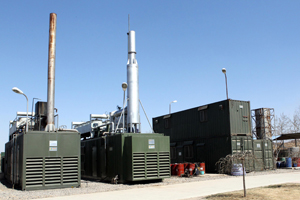Research Brief
Greenhouse Gas Emissions and China’s Agriculture Sector
China is the world’s largest developing country and its huge population requires a similarly large agricultural sector to sustain it. A major challenge for China faces is working out how increasing demands for food can be met at the same time as reducing greenhouse gas (GHG) emissions. Despite the urgency of this task, little evidence of what drives GHG emissions in China’s agricultural sector exists. In the WIDER Working Paper ‘The Decarbonization of China’s Agriculture’ Youngfu Huang and Jingjing He set out to remedy this situation. They employ spatial panel data to investigate the impacts of machinery, energy use, fertilizer use, pesticide use, and agricultural investment on carbon dioxide emissions in China’s agricultural sector.
What drives GHG emissions?
Huang and He take a regional approach to assessing the driving factors behind GHG emissions in China’s agricultural sector. The sheer size of China in terms of land mass means that different regions experience significantly different agricultural conditions, and react to these conditions in different ways. By looking at how both the independent variables and CO2 emissions differ across regions they are able to identify the role each variable plays in contributing to, or mitigating, CO2 emissions.
- The more agricultural machinery is adopted the more associated CO2 emissions can be expected from the agricultural sector.
- CO2 emissions are lower if machinery is powered with electricity rather than with diesel.
- Both fertilizer and pesticide consumption are associated with higher levels of CO2 emissions.
- Agricultural investment is a contributing factor for CO2 emissions.
- Droughts are associated with higher CO2 emissions, but other natural disasters are not.
Policy Implications

One key implication of Huang and He’s research is the Chinese government must account for regional differences when setting emission reduction targets. An emission reduction scheme which does not take into account the individual characteristics of China’s provinces will be less successful as it will not address the specific adaption needs of each province.
A good start
In terms of addressing the driving factors behind CO2 emissions, China has made a start. The government’s twelfth Five-Year Plan contains a commitment to enhance agricultural development by building better rural services and technology dissemination. Alongside this the Chinese Ministry of Agriculture has introduced a series of laws relating to sustainable agriculture. These laws have helped to promote the development of alternative fuel sources such as biogas and solar power. Huang and Fe suggest that the positive effects of these policy interventions are starting to show. The proportion of biomass energy usage in rural areas has already decreased and a huge number of sustainable energy projects have sprung up around the country.
China is also making efforts to combat the overuse of fertilizers and pesticides. For a long time fertilizers enjoyed a generous state subsidy due to their role in boosting both China’s fertilizer industry and agricultural production. However after recognizing the role such fertilizers play in GHG emissions the government removed the subsidies and introduced measures to encourage the development of organic fertilizers produced from animal manure. The overuse of pesticides in China threatens not only the environment, but also public health. The Chinese government have reacted to this by introducing strict regulations on pesticide use. The regulations are designed to improve the quality control, administration, management, marketing, and use of pesticides. Huang and He suggest that these measures show that the Chinese government is on the right track when it comes to dealing with the environmental threat posed by pesticides and fertilizers.
Encouraging low-carbon energy sources
However, Huang and He argue that more regulations and policy efforts are needed to encourage the production and wider use of low-carbon energy sources such hydropower, biogas, solar, geothermal and wind power. They also suggest that in addition to regulation improved technical assistance and financial measures are also critical.

Technical assistance is needed to improve farmer’s knowledge of energy saving machinery and low-carbon fertilizers and pesticides. Huang and He suggests that if farmers are made aware of the benefits of using sustainable farming techniques, and the fact that using less fertilizers and pesticides can actually save them money will be more likely to embrace efforts to reduce emissions. If farmers are to play a role in reducing emissions they must be aided by public services that disseminate information, education and, technology.
Forward through financial incentives?
Huang and He also suggest that financial incentives could play a role in emission reduction efforts. At least initially, farmers looking to convert to more sustainable agricultural methods will face higher costs. Government subsidies and tax reductions would help to cover this cost and reduce the disincentives associated with adapting to low-carbon farming. Investment in the research and development of environmentally friendly farming methods would also help pave the way for an environmentally sustainable agriculture sector. Huang and He argue that government investment
Huang and He finish by pointing out that the level of GHG emissions from China’s agricultural sector has been rising over the past decade. They argue that this underlines the necessity and urgency of China adopting a low-carbon agriculture development strategy. A combination of regulation, technical assistance, and financial measures should form the foundation of this strategy.
 Join the network
Join the network